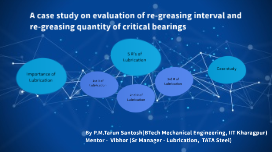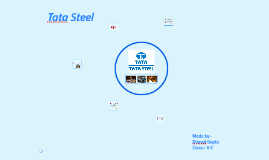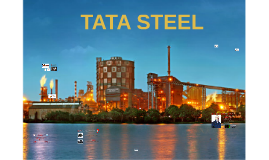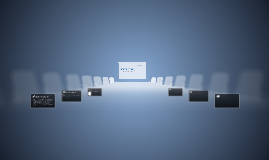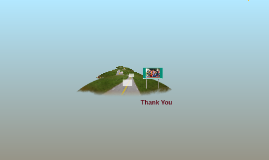tata steel
Transcript: Study of Implementation of DCS in Sinter Plant 1, 2, 3 and 4 DCS architecture of sinter plant 2 Typical DCS System Architecture Sintering process DCS architecture of sinter plant 3 After sintering Peer-to-peer architecture (P2P architecture) is a commonly used computer networking architecture in which each workstation, or node, has the same capabilities and responsibilities. The decentralized nature of P2P networks increases robustness because it removes the single point of failure that can be inherent in a client-server based system. Sinter plant 5 All circuit of sinter plant is now available at HMI which can be operated and controlled in central control room. Operator control station and sinter handling operator station is now unmanned and all these activities are now being done from central control room. Table feeder control room is now unmanned and its entire control is through central control room (DCS) Furnace temp control has now become much easier and accurate. Trending /archiving of all data is possible even for a longer period. Better visualization of process by operator All the data of sinter plant is available at the DCS and start /stop of SP is can be done by DCS. Fault diagnosis is now easy .It can be done by operator. Forcing/bypassing is now much easier than previous. Awareness regarding sinter plant has now improved because all data are now available at central control room HMI. 1. In the sintering process, coke is ignited by a natural gas burner; and air is sucked through the material bed. Client / server network TATA STEEL This is how it looks in real !!! Introduction cont……….. By Anusha Patel H S 1SJ14LDS01 A server host runs one or more server programs which share their resources with clients . A client does not share any of its resources, but requests a server's content or service function. Clients therefore initiate communication sessions with servers which await incoming requests Peer to peer network Particle size less than 5mm Overview DCS architecture of sinter plant 3 Bistupur, Jamshedpur , Singhbhum(dist.), Jharkhand -813011 rails Particle size greater than 5mm 1.Sinter is fine particles of iron ore, coke and limestone, fused into lumps for use as blast furnace feed. Processing sinter helps eliminate raw flux, which is a binding material used to agglomerate materials, which saves the heating material, coke, and improves furnace productivity. 2.Machines and field devices used for processing sinter is controlled by DCS (Distributed Control System). DCSs are usually designed with redundant processors to enhance the reliability of the control system. 3.Siemens have implemented DCS in sinter plant 2 using client server model. Whereas ABB has implemented DCS in sinter plant 3 using hybrid peer to peer model. Comparison of DCS architectures of two sinter plants is made and the conclusion is made Distributed Control System (DCS) 1. What is sinter? 2. What is sintering process? 3. What is sinter plant? 4. DCS and architecture 5. Which architecture is best for plant and why? 5 1.Established in 1907 by Dorabji Tata as Asia's first integrated private sector steel company 2.World's second-most geographically-diversified steel producer What is sinter? Sinter is fine particles of iron ore, coke and limestone, fused into lumps for use as blast furnace feed. Introduction Uses of DCS in sinter plant…….. A Distributed Control System (DCS) refers to a control system of a process or any kind of dynamic system, in which the controller elements are not central in location but are distributed throughout the system with each component sub-system controlled by one or more controllers. The entire system of controllers is connected by networks for communication and monitoring. DCS is a very broad term used in a variety of industries, to monitor and control distributed equipment. Sinter plant Internal guide Dr. S BHARGAVI PROFESSOR Dept of ECE, SJCIT The client-server model of computing is a distributed application structure that partitions tasks or workloads between the providers of a resource or service, called servers, and service requesters, called clients. Often clients and servers communicate over a computer network on separate hardware, but both client and server may reside in the same system. Abstract As nodes arrive and demand on the system increases, the total capacity of the system also increases, and the likelihood of failure decreases. If one peer on the network fails to function properly, the whole network is not compromised or damaged. Agglomeration takes place on sinter bed . It involves combining particles to create products with new particle sizes. 2. The air and coke react to partially soften and reduce the ferrous materials with the slag forming materials bonding everything together into a (cooked) lump of solid sinter. Sri Adichunchanagiri Shikshana Trust(R) S J C Institute of Technology Department of Electronics And Communication Abstract TATA STEEL Ltd. Before sintering bridges







